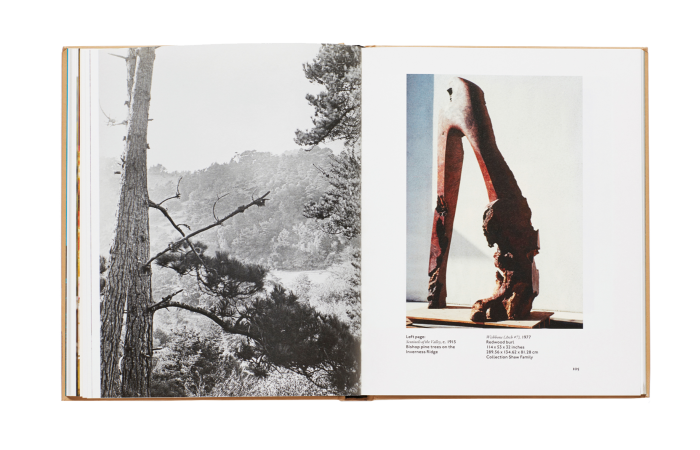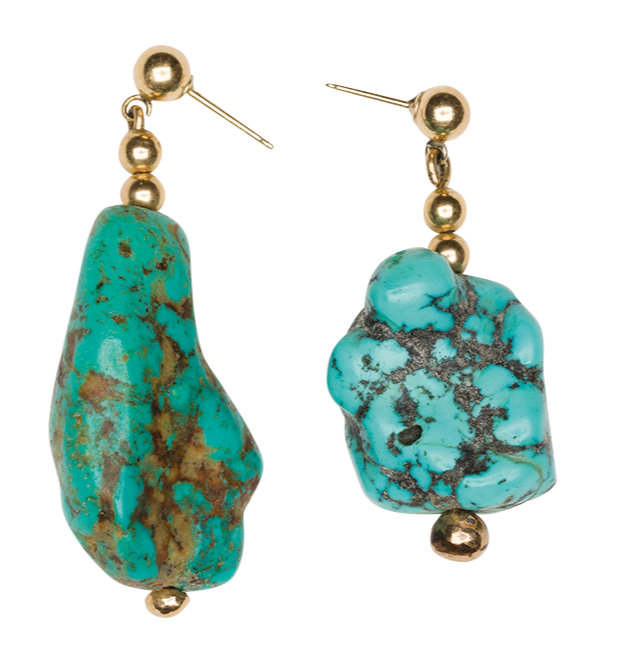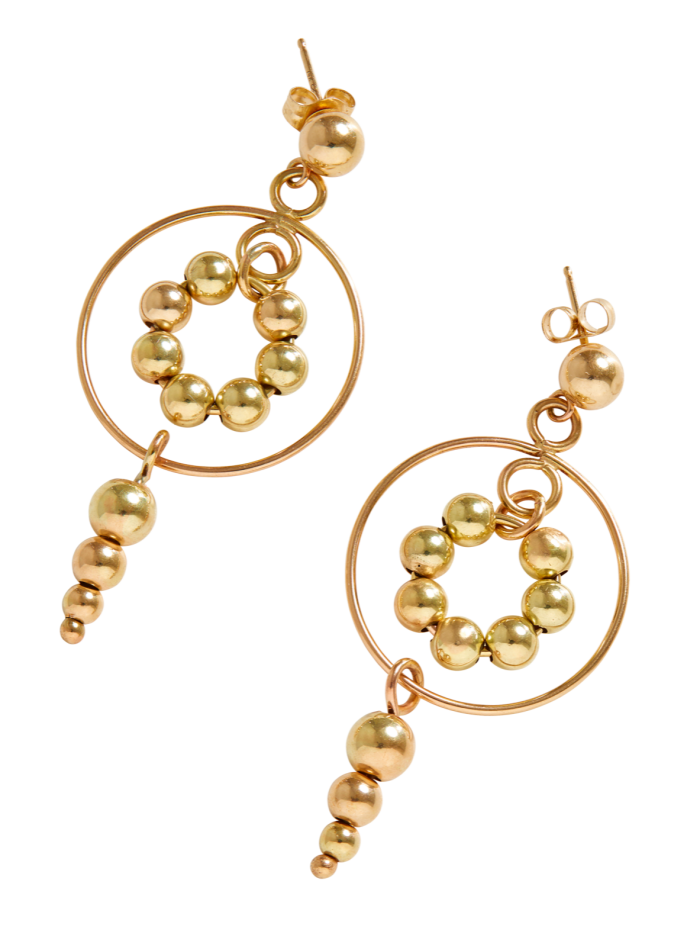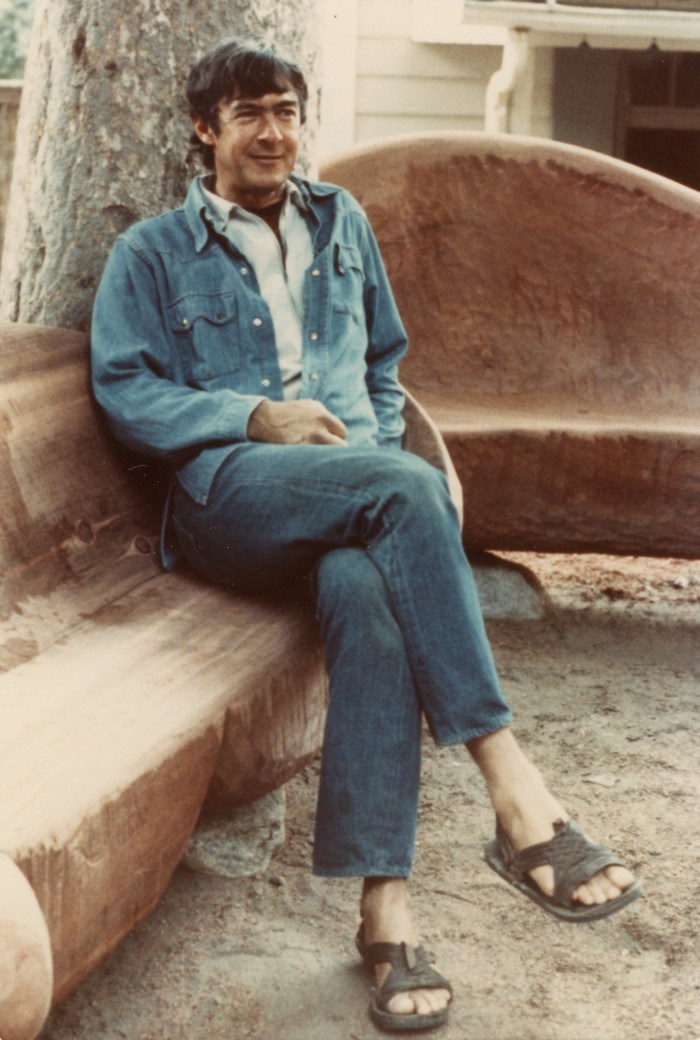Chip off the block – lessons from my father, JB Blunk

Roula Khalaf, Editor of the FT, selects her favourite stories in this weekly newsletter.
I can still remember the smell of my father’s studio. A mix of freshly cut wood, sawdust and varnish. It was a warm, dusty, pungent scent that emanated from his sculptures and, at the end of the day, his work clothes. The smell would waft out of the open doors of his studio and envelop me like a strong hug when I stepped inside.

My father is the late sculptor JB Blunk, best known for his large-scale redwood installations such as The Planet (1969) at the Oakland Museum of California. But before he started working with wood in the early 1960s, ceramics were his focus. When he was drafted into the Korean War in 1949, he saw it as an opportunity to visit Japan and meet the revered studio potter Shoji Hamada. There, a chance encounter with the artist Isamu Noguchi led to apprenticeships with the distinguished potters Kitaoji Rosanjin and Kaneshige Toyo – experiences that deeply influenced his work and way of life.

It was seen most visibly in the construction of our home in the small Marin County town of Inverness, California. The house and two studio spaces were built by hand from salvaged materials by my father and his first wife, Nancy Waite Harlow, in the late 1950s. Here, amid the large redwood burls, chunks of cypress and other scraps of wood, JB would carve and sand his sculptures, paint, and work on his ceramics and jewellery designs.





For me, as a child, my home was a magical playscape filled with art and creative people. The house is surrounded by dense woods and a verdant garden where I created a vast network of dirt roads for my Matchbox cars. I was a wild child. I hated having my hair brushed and wearing shoes. I painted and drew ceaselessly. My mother, textile artist Christine Nielson, taught me to weave; my father taught me how to work with clay, and together we would make pots, cups and plates.
If I wanted to spend time with my father while he worked – which was every day – I needed my own project. I started a restaurant called Chatz Cazure that served sawdust-based dishes. My father would always order the special of the day, which I dished up on plates and bowls made from redwood scraps. I would also make furniture for my doll’s house. Occasionally he would join me, carving wonderful miniature coffee tables or chairs.
JB was extremely productive and protective of his time. A classic Blunk adage was “my time is precious”, but this didn’t mean he was a recluse. He loved to socialise, and my parents hosted weekly dinner parties with musicians such as Ry Cooder and Taj Mahal, and artists Lee Mullican and Luchita Hurtado. Once a month our neighbour, the surrealist painter Gordon Onslow Ford, would join us for dinner. My mother always made a soufflé with bundles of roasted potatoes and rosemary in parchment paper. Gordon would arrive and extend his right hand to me. I’d gently pry his fingers open to reveal a beautiful polished stone.


Noguchi, a lifelong friend of my father’s, also came to our house several times. I remember his beautiful hands – hardened and sculpted by years of making. Describing what JB had created in Inverness, Noguchi said in 1978: “I like to think that the courage and independence JB has shown is typically Californian, or at least Western, with a continent between to be free from the categories that are called art. Here, the links seem to be more to the open sky and spaces, and the far reaches of time from where come the burled stumps of those great trees.”


Whenever I return to Inverness and walk down our driveway, it feels like I’m exhaling. I feel grounded. I was born within these walls and the space is embedded with memories. The objects too are part of ongoing histories – things JB acquired from his travels in South America, Japan and Indonesia; paintings and sculptures made by friends; and, of course, his own creations – all arranged and rearranged over the decades.
There are certain objects that best embody the humour and considerate craft of my father’s work. A ceramic soy sauce pitcher he made in 1970, for instance. The oddly shaped vessel, handmade from local clay, pours just the right amount of soy sauce. The top and bottom are lightly glazed but the round belly of the vessel is left rough to provide a little traction while pouring. It’s playful and durable, and has been in constant use for more than 30 years. So have the light pulls in our home. Whittled from extremely light balsa wood, in erotic forms that are quintessential Blunk, they are both artworks and utilitarian objects. There’s also a sink carved from a single piece of cypress – a voluptuous yet functional form that was first roughly cut with a chainsaw then finished with a chisel and sandpaper, with deep, long grooves that resemble the surface of a raked Japanese garden.

My father’s jewellery has also stood the test of time. Each Christmas he would give my mother a new piece, announced by a poem he had written on brightly painted pieces of paper, folded into unusual shapes and tucked into the tree. One particular bracelet – a circular brass band fitted with two beads, one carved from a deer antler, the other from ivory – she has worn every day for the past 40 years. This design, rethought as the Sun Moon Bracelet, exemplifies the ethos of the Permanent Collection, the brand I founded with Fanny Singer in 2016. Our goal is to create unique and timeless objects, garments and accessories, inspired by the environments we grew up in – the kitchen of Fanny’s mother, Alice Waters, and the workshop of my father.

My father’s personal style was all about layers and flair. He would wear Levi’s with a long-sleeved shirt in bright purple, pink or striped cotton, then a work coat and bandana, the latter secured with a hand-carved horn or wood bolo. He made his own belt buckles out of silver and abalone. My mother, meanwhile, favoured natural fibres in earthy tones, offset with my father’s elaborate jewellery. In the ’80s she wore her hair in cornrows, then, of course, got a perm. All their clothes were considerately made, often cut from fabric sourced on their travels to South America and Japan. My father’s well-worn work coat has a special place in my memory, and has also been recast as part of the Permanent Collection in dark-indigo Japanese denim. All these influences are reflected in my own personal style: a combination of old and new, with just a little flair – and always a piece of Blunk jewellery.

In this way I carry my upbringing with me. It was a unique experience. There was certainly a time when I craved a conventional environment. As a teenager I wanted nothing more than to live in the suburbs. It wasn’t until after my father died in 2002 that I really began to appreciate what he, Nancy and my mother had created and shared with me. Now I aspire to this type of independence. I also strive to continue JB’s legacy. I’m the director of his estate and have recently published the first monograph about him. In October, Kasmin Gallery will host the first presentation of my father’s pieces in New York. He would have loved this.
JB Blunk, edited by Mariah Nielson and Abake, is available at jbblunk.com and dentdeleone.com. JB Blunk is at Kasmin Gallery, NY, from 8 October to 7 November (kasmingallery.com).
Comments